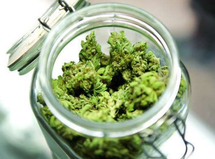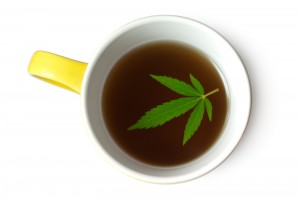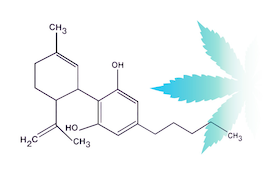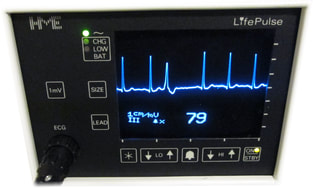 Not all studies are the same. There are good studies. There are bad studies. Some studies provide preliminary evidence, sort of like clues to a crime. Amy Norton of US News and World Report writes a story titled, “Medical Cannabis for Pain is Linked to Slight Rise in Heart Trouble.” I investigated the finer details of this study noting that it was funded by the National Institute of Drug Abuse with principal investigators admitting to financial relationships with Pfizer, a pharmaceutical company. Dr. Nina Nouhravesh presented findings from this preliminary study at a European Society of Cardiology meeting in Barcelona, Spain. “In Denmark, there are three approved forms of Cannabis, all taken orally”, says researcher Dr. Nouhravesh. “They include oral solutions and sprays of CBD; teas containing a mix of THC and CBD; and dronabinol, a synthetic form of THC.” Dr. Nouhravesh and other researchers used Denmark’s national database, searching the medical records of 1.6 million patients with chronic pain. Just under 4,600 were medical Cannabis patients who had filled at least one prescription for the three available forms of Cannabis. The study found that those patients who used prescribed Cannabis were 64% more likely to have a heart arrhythmia in six months Does this sound bad to you? It isn’t. 0.9% or 4,140 patients who used Cannabis had arrhythmias, whereas 0.5% or 800,000 patients who didn’t use Cannabis also had arrhythmias. The relative risk seems significant, but the absolute risk is actually very low. If you don’t pay attention to the math, you can be misled. It’s known that cannabinoids can influence heart rate, blood pressure, and blood clotting. Add those facts to this study and some people may start to worry. Robert Page, a professor at University of Colorado Skaggs School of Pharmacy sounds concerned as he comments on the study. “Just because something is natural doesn’t mean it’s safe,” he says. Two out of three of the prescribed products in this study are not natural. Why does Professor Page make a comment on natural medicine? I’m not sure. I don’t even know why the quote is in the article. People with chronic pain often have other health problems and take multiple medications. In this study, 42% of the patients prescribed Cannabis were also taking opiates. Only 12% of patients not taking Cannabis were prescribed opiates. “That’s an important difference,” says Dr. Jim Cheung, chairman of the American College of Cardiology. “Opioid use typically signals severe pain – which itself could trigger arrhythmias.” Dr. Cheung also notes that some arrhythmias are more serious than others, and it’s unclear whether Cannabis is associated with specific types of arrhythmias. We’ve seen doctors change careers to become politicians. It's also clear that headlines like these are sometimes used as political maneuvers. To uncover truth, scientists discuss or debate facts and repeat studies. As well, scientists usually take a good look at study design and statistics to make conclusions. The answers are not always clear. This story may be a political maneuver or just a misunderstanding of the math by the author. In the end, these authors conclude that more study is warranted. Remember the adage, don’t believe everything you read, especially when it comes to this article about Cannabis in US News and World Report. 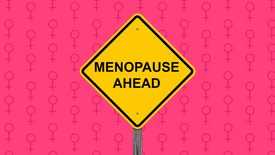 An original study recently published in The Journal of North American Menopause Society titled “A Survey of Medical Cannabis Use During Perimenopause and Postmenopause” compares Cannabis use among women experiencing the transition to menopause with women after menopause. Perimenopause is defined as the time when ovaries gradually reduce the production of estrogen, which can include irregular menstrual flow, hot flashes, and night sweats. Postmenopause is the period after perimenopause and defined as no menstrual flow for 12 consecutive months. The study is a cross-sectional, observational study designed to collect information at a single time point identifying menopause related symptoms associated with medical Cannabis use. The study did not try to show how well Cannabis worked for menopausal symptoms, which is difficult in an observational study design. To better understand medical Cannabis use among menopausal women, researchers conducted surveys on 131 perimenopausal and 127 postmenopausal individuals. They found that individuals experiencing perimenopause were more likely to have a diagnosis of depression and anxiety and more likely to use medical Cannabis than postmenopausal women. In other words, the transition period to menopause was associated with more Cannabis use. 92% of the women had tried Cannabis at least once in their lifetime. 84% were regular Cannabis users, using at least once per month. Smoking flower (84%) and using edibles (78%) were the most common methods of using Cannabis. It’s interesting to note that a broad range of products were used by at least 25% of the participants including vape pens, tinctures, vaporizing the flower and topicals. The top three reasons for using Cannabis were poor sleep, anxiety, and to improve sex drive. The top reasons why women were not interested in using Cannabis were because they had a lack of knowledge of Cannabis, or their menopausal symptoms were already well managed. Other reasons were no access to Cannabis products, fear of getting high, and cost. Hormone replacement therapy (HRT) is the medically recommended treatment for menopause. However, HRT is associated with negative symptoms such as mood swings and fatigue. There is also an increased risk of developing cancer with HRT. It’s known that Human ovaries produce the endocannabinoid anandamide with peak blood levels occurring at ovulation and correlating with estrogen levels. Giving estrogen to animals that have their ovaries removed (a model for menopause), increases the expression of cannabinoid receptors and levels of anandamide. This indicates that the endocannabinoid system is very likely linked to functioning ovaries. This is molecular evidence why Cannabis may benefit menopause. The study authors do note some concerns with current Cannabis use for menopause. Smoking tobacco is associated with an increased risk of early menopause. Although smoking Cannabis is different than smoking tobacco (unless you are smoking a spliff or a blunt), it’s uncertain whether it may also affect the onset of menopause. Another concern is that dosage is uncertain with broad spectrum or full spectrum Cannabis products and needs to be studied in prospective clinical trials. And finally, the effect of cannabinoids on liver metabolism is important to consider when prescribed medicines are also being used. All in all, this study highlights that medical Cannabis has great potential as treatment for the adverse symptoms related to menopause. Patients Grow to their NeedsThat’s right. Medical Cannabis patients in California can grow to their needs, NO LIMITS.
California voters did something right when they enacted Prop 215. The 1996 voter initiative provides a defense for medical patients and their defined caregivers who grow and possess Cannabis at any amount for medical purposes. Titled the “Compassionate Use Act of 1996”, Prop 215 identifies medical conditions as the underlying defense for growth and possession of Cannabis. The qualifying medical conditions need to be confirmed by physician evaluation. As well, the physician is responsible for guidance. Prop 215 authors, Dennis Peron, Valerie Corral, Dale Gieringer, Tod Mikuriya, and many more, formed an all-star cast of compassionate professionals who chose not to describe Cannabis as a commodity in the law. They emphasized COMPASSION for patients. There are many who recognize the poor job California regulators have since done in regulating Cannabis. A lot of the problems are attributed to Prop 64, the “Control, Regulate, and Tax Adult Use of Marijuana Act”. Like a tenant of the Evil Empire, the Prop 64 initiative describes Cannabis as a commodity and benefits large corporate growers. As a result, many small crop Cannabis farmers have shut down their licensed operations and sold their farms. Currently, the best access to quality, low-cost medical Cannabis remains the 215 recommendation which allows patients to grow their own. Confusion Continues “How many plants can a qualified medical cannabis user grow in California? Ask law enforcement or various state and county departments, and each agency, in some cases, each individual within each agency has a different answer,” writes Nichole Norris in the Redheaded Blackbelt. Apparently, county officials are confused. Humboldt County Sheriff deputies and code enforcement officers have been caught on camera saying, “There is no medical anymore,” and “215 doesn’t matter.” However, in an interview with Ms. Norris this summer, Humboldt County Sheriff Billy Honsal recognized medical cannabis laws. Sheriff Honsal believes Prop. 215 was not written well. However, he understands that if someone is growing more than six plants deputies must look at the 215 documents. Adding to the confusion, Humboldt County Building and Planning Department operates on different limits allowing 100 sq-ft, 200 sq-ft, or 400 sq-ft depending on lot size. Cannabis expert and local criminal defense attorney, Eugene Denson, writes “It is important for the Sheriff, the Code Enforcement Unit, and other county officials to understand what is allowed under existing law because I believe they are presently violating the law… due to a mistaken opinion of what the laws of California allow. These actions make the county liable for damages and other legal remedies available to patients.” Past medical patients uprooted their lives and moved to Humboldt County to benefit from a favorable Cannabis environment. Some patients see Cannabis as the plant that saved their lives from the suffering of chronic illness.. Humboldt County is well known as an epicenter of Cannabis. The tenacity and persistence of Emerald Triangle inhabitants to grow their own Cannabis despite the laws enacted to "control, tax, and regulate" has started a movement to world wide legalization.. However much regulators put their hands out panning for cash to fill government coffers, they cannot bully the medical Cannabis patient. Thankfully, the authors of Prop 215 saw Cannabis as more than a commodity. As a result of their incredible foresight, medical Cannabis patients can continue to produce their own medicine and the legacy the personal medical Cannabis garden continues. |
AuthorJean Talleyrand, M.D., Archives
September 2023
Categories |
Mailing Address: MediCann 1336 Willard Street, C • San Francisco, CA 94117
Important Disclaimer!
The information contained in this site does not intend to replace any medical advice or care by a trained physician.
Any use of this information is solely the the responsibility of the user.
Important Disclaimer!
The information contained in this site does not intend to replace any medical advice or care by a trained physician.
Any use of this information is solely the the responsibility of the user.
© COPYRIGHT 2015. ALL RIGHTS RESERVED.

 RSS Feed
RSS Feed
